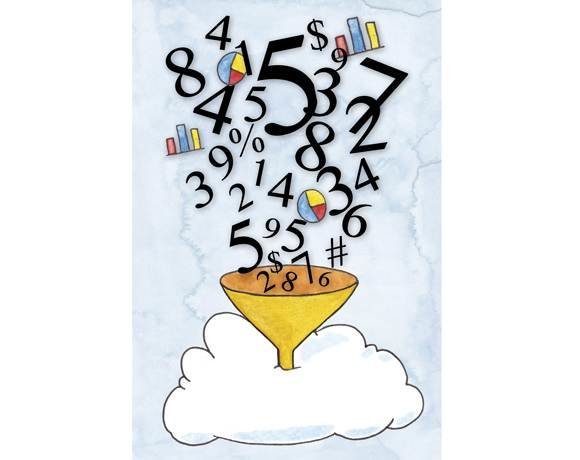Feb 08, 2013
Social sciences get into the Cloud
Scientific disciplines are usually classified in two broad categories: natural sciences and social sciences. Natural sciences investigate the physical, chemical and biological aspects of Earth, the Universe and the life forms that inhabit it. Social sciences (also defined human sciences) focus on the origin and development of human beings, societies, institutions, social relationships etc.
Natural sciences are often regarded as “hard” research disciplines, because they are based on precise numeric predictions about experimental data. Social sciences, on the other hand, are seen as “soft” because they tend to rely on more descriptive approaches to understand their object of study.
So, for example, while it has been possible to predict the existence and properties of the Higgs boson from the Standard Model of particle physics, it is not possible to predict the existence and properties of a psychological effect or phenomenon, at least with the same level of precision.
However, the most important difference between natural and social sciences is not in their final objective (since in both fields, hypotheses must be tested by empirical approaches), but in the methods and tools that they use to pursue that objective. Galileo Galilei argued that we cannot understand the universe “(…) if we do not first learn the language and grasp the symbols, in which it is written. This book is written in the mathematical language, and the symbols are triangles, circles and other geometrical figures, without whose help it is impossible to comprehend a single word of it; without which one wanders in vain through a dark labyrinth.”

But unlike astronomy, physics and chemistry, which are able to read the “book of nature” using increasingly sophisticated glasses (such as microscopes, telescopes, etc.), social sciences have no such tools to investigate social and mental processes within their natural contexts. To understand these phenomena, researchers can either focus on macroscopic aggregates of behaviors (i.e. sociology) or analyse microscopic aspects within controlled settings (i.e. psychology).
Despite these limitations, there is no doubt that social sciences have produced interesting findings: today we know much more about the human being than we did a century ago. But at the same time, advances in natural sciences have been far more impressive and groundbreaking. From the discovery of atomic energy to the sequencing of human genome, natural sciences have changed our life and could do it even more in the next decades.
However, thanks to the explosive growth of information and communication technologies, this state of things may change soon and lead to a paradigm shift in the way social phenomena are investigated. Actually, thanks to the pervasive diffusion of Internet and mobile computing devices, most of our daily activities leave a digital footprint, which provide data on what we have done and with whom.
Every single hour of our life produces an observable trace, which can be translated into numbers and aggregated to identify specific patterns or trends that would be otherwise impossible to quantify.
Thanks to the emergence of cloud computing, we are now able to collect these digital footprints in large online databases, which can be accessed by researchers for scientific purposes. These databases represent for social scientists the “book written in the mathematical language”, which they can eventually read. An enormous amount of data is already available - embedded in online social networks, organizations digital archives, or saved in the internal memory of our smartphones/tablets/PCs – although it is not always accessible (because within the domain of private companies and government agencies).

Social scientists are starting to realize that the advent of “big data” is offering unprecedented opportunities for advancing their disciplines. For example, Lazer and coll. recently published on Science (2009, 323:5915, pp. 721-723) a sort of “manifesto” of Computational Social Science, in which they explain the potential of this approach in collecting and analyzing data at a scale that may reveal patterns of individual and group behaviors.
However, in order to exploit this potential, social scientists have to open their minds to learn new tools, methods and approaches. Actually, the ability to analyse and make sense of huge quantities of data that change over time require mathematics and informatics skills that are usually not included in the training of the average social scientist. But acquiring new mathematical competences may not be enough. The majority of research psychologists, for example, is not familiar with using new technologies such as mobile computing tools, sensors or virtual environments. However, these tools may become the equivalent in psychology to what microscopes are for biology or telescopes are for astronomy.
If social scientists will open their minds to this new horizon, their impact on society could be at least as revolutionary as the one that natural scientists have produced in the last two centuries. The emergence of computational social science will not only allow scientists to predict many social phenomena, but also to unify levels of analysis that have been until now separately addressed, e.g. the neuro-psychological and the psycho-social levels.
At the same time, the transformative potential of this emerging science requires also a careful reflection on its ethical implications for the protection of privacy of participants.
18:29 Posted in Research tools | Permalink | Comments (0)







The comments are closed.